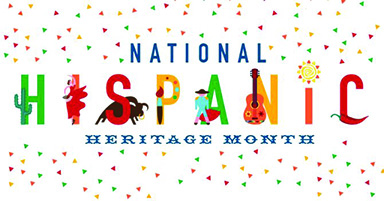
Hispanic Heritage Month recognizes and celebrates the contributions Americans tracing their roots to Spain, Mexico, Central America, South American and the Spanish-speaking nations of the Caribbean have made to American society and culture. The observance was born in 1968 when Congress authorized the president to issue an annual proclamation designating National Hispanic Heritage Week. Just two decades later, lawmakers expanded it to a month-long celebration, stretching from September 15 to October 15. The timing is key. Hispanic Heritage Month — like its shorter precursor — always starts on September 15, a historically significant day that marks the anniversary of independence of five Latin American countries: Costa Rica, El Salvador, Guatemala, Honduras and Nicaragua. The designated period is also a nod to those from Mexico and Chile, which celebrate their independence on Sept. 16 and Sept. 18, respectively.
The following facts are available thanks to the public’s invaluable participation in U.S. Census Bureau surveys. We appreciate the information shared by each respondent as we continuously count and measure America’s people, places and economy.
The Hispanic population of the United States as of July 1, 2019, making people of Hispanic origin the nation’s largest ethnic or racial minority. Hispanics constituted 18.5% of the nation’s total population.
The number of states with a population of 1 million or more Hispanic residents in 2019 — Arizona, California, Colorado, Florida, Georgia, Illinois, New Jersey, New Mexico, New York, North Carolina, Pennsylvania and Texas.
The increase from 2018 to 2019 in the number of Hispanics in Maricopa, Arizona, the biggest jump in this population during this period. The median age of the Hispanic population, up from 27.3 in 2010.



